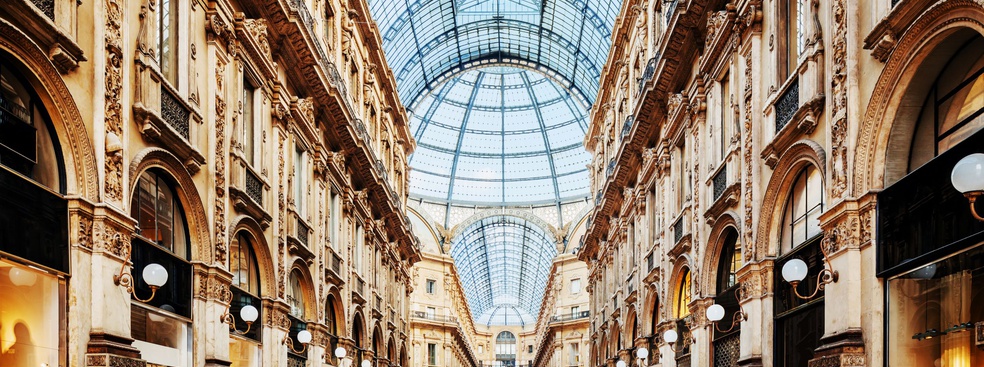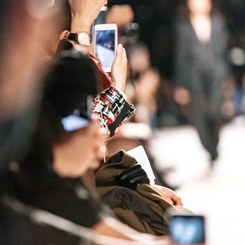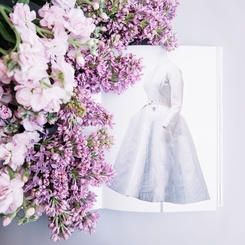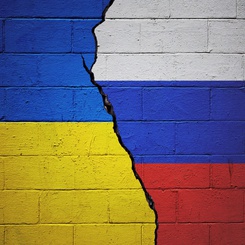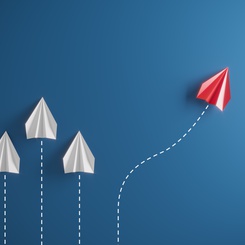With ESSEC Knowledge Editor-in-chief
Global crises like the ongoing global COVID-19 crisis and the recent Russian invasion of Ukraine have impacted all industries, including the luxury industry- but perhaps not in the way you’d think. Different crises have impacted the luxury industry in different ways, depending on the nature of the crisis - but the luxury industry has taken a hit in recent years, from the 2009 global financial crisis, to the Brexit vote in 2016, to the 2019 Hong Kong protests. The China mainland offered hope for growth - but was hit by the emergence of COVID-19 at the dawn of 2020. Ashok Som and Christian Blanckaert, in the latest edition of the book The Road to Luxury, explains the toll this took on the luxury industry.
As we’ve seen over the course of the crisis, in many cases the rich simply got richer- and if they are the consumers of luxury, did they really stop making purchases? Dr. Som explains that this trend is nothing new as high-net-worth individuals have seen their disposable income increase mani-fold over the last decade, and society in general has become more affluent, leading to a larger increased consumer base. To understand the competitive landscape of this industry, the first and foremost is to separate the personal luxury goods industry into two distinct sectors : hard luxury (like watches and jewelry) and soft luxury (like fashion and accessories). Luxury conglomerates like LVMH, Kering, and Richemont, and other independent luxury companies like Hermes, Chanel, Prada offer a range of products and experiences. Very few remain as monobrands or offer a single product category, with a rare exception being Rolex (watches). This means there is intense competition between relatively oligopolistic players within all individual categories where growth and competition is fuelled by the increasing disposable income during the pandemic or before.
These factors, combined with the fact that many high-net-worth individuals are less impacted by economic downturns, contribute to a perception that the luxury industry is “recession-proof”. Indeed, the luxury industry did recover quickly after the 2001 and 2009 financial crises and after COVID-19 hit in 2020. Dr. Som dives into how the crises played out in different strongholds across the world.
One such stronghold is Japan- up until a major earthquake and tsunami and the Fukushima nuclear meltdown in 2009, Japanese consumers formed a major share of the market. In the aftermath of those crises, the luxury market took a significant hit in Japan- and since Japanese consumers were so numerous, global luxury sales and shares tumbled. That being said, since then, the market has slowly grown again- while this was slowed by the pandemic, Japan’s luxury market is expected to continue growing and it is the third-largest luxury market worldwide outside Europe.
Unsurprisingly, Europe, the birthplace of luxury goods, is another stronghold. During the financial crisis, luxury sales only declined by 5%. This may be for two reasons: culturally, Europe is associated with luxury, and European consumers have significant buying power, making them the world’s most stable consumers. The second reason is its popularity as a tourist destination, with France being the world’s most visited country. Foreign tourists spend a considerable amount of their budget while vacationing in Paris, France: 60% of Galeries Lafayette’s business comes from tourists, with the majority of those being from China. As Fashion Week drew to a close in 2020, one European country after another went into lockdown. This took a hit on both manufacturing and sales - but luxury brands pivoted, with LVMH producing hand sanitizer rather than perfume at the height of the crisis.
Asia in general, but especially China, has been the savior of many luxury brands following crises. Sales flourished in China even while the US and Japan were floundering. China has demonstrated stable growth. The market is not impervious to crises, however: the 2019 Hong Kong protests (still ongoing) resulted in many brands closing their stores or leaving altogether, and the outbreak of COVID-19 in Wuhan shut the country down. E-commerce remained, however, and limits on international travel resulted in consumers spending their money locally: LVMH saw a bigger share of sales from mainland China in 2020 compared to 2019. The post-pandemic rebound in 2021 was more of a “V” shape
We can’t forget the United States - the American market holds great potential for European luxury brands, but the American dream is not easy to achieve. Ralph Lauren and Tiffany have a hold on American consumers, making it hard to compete, and convenience is key. Tapping into the consumer base is untapped potential - with a large number of female millionaires - but it will take time and effort to optimize this market. Tiffany has seen an impressive turnaround after being acquired by LVMH in 2020, while there are unconfirmed rumors doing the rounds that Ralph Lauren is looking for a succession plan with LVMH.
And what of Africa? The 2011 Egyptian revolution and the Arab spring took a hit on the luxury market, with stores like Burberry and Ferragamo leaving and sales declining by 70% for the holdouts. This was linked to the departure of the region’s wealthy, and a decrease in luxury tourism. In a rather surprising turn, perfume sales are booming, and niche brands like textiles are starting to become more popular. These are signs that Africa will become a new luxury stronghold in the future.
Luxury in crisis?
In the aftermath of a crisis, how does the luxury industry fare? Certain product categories suffer more than others: after the 2009 financial crisis, watch sales decreased the most, followed by jewelry, while leather goods were the most consistent. Many brands had to undertake cost-cutting operations. Similarly, following the COVID-19 crisis and the French Gilets Jaunes movement, the luxury industry slumped across all sectors. This shows that contrary to what one might think, the luxury industry is vulnerable to economic crises, with companies ranging from major conglomerates to small, family-owned businesses suffering. No brand was immune to the crisis and the whims of the stock market. The fantastic results of LVMH, Kering in 2021, beating all estimates, show that though there was a genuine health crisis, the rebound was sharper than most predicted. With the current Russian invasion in Ukraine, the stock prices of the luxury conglomerate have held steady, fluctuating on a daily basis with a band of 5% in the last weeks.
How to survive a crisis
With this in mind, Dr. Som explains companies’ strategic responses to the crisis. Many players adopted two main approaches: internal and external tactics. Internal ones included improving business practices and culture, cost-cutting, and product quality, while external ones focused on the consumer. Luxury brands tried to cut costs and restructure, and even dropped their prices in some cases. However, putting products on sale can backfire, as noted by Bernard Arnault of LVMH: “If you don’t put your products on sale, consumers feel they are buying something that retains its value…” Other companies, like Coach and Ralph Lauren during the US subprime mortgage crisis, offered products at a lower price point. Still other companies moved their manufacturing operations to countries where costs were lower, like China.
Some companies took a different tack: Bottega Veneta stuck with its Italian artisans to ensure high quality products, and went dark on social media, positioning itself as exclusive and sophisticated. The tactic worked. It’s not an approach for everyone: communication strategies in the digital age are important to success.
In some cases, brands decided to use the crisis as an opportunity by expanding to new markets and launching new products. Hermès, for example, opened new stores across the world after the global financial crisis: and the strategy paid off, with Hermès doing quite well despite a worldwide economic downturn. Coach offered a new, less expensive product line to reach a less wealthy audience. Brands also moved swiftly into the digital age, with online advertising, social media marketing, and online retail becoming key business strategies.
When it comes to the COVID-19 pandemic, many brands decided to engage in philanthropic activities - like LVMH and hand sanitizer - and focus on their heritage. Armani, Bulgari and Dior also pivoted to producing PPE products. This strengthened their image and emphasized their contributions to society in the eyes of their consumers.
What does all this tell us? In a nutshell, there’s no one way to respond to the crisis, and there wasn’t one playbook that all the brands used. Different strategies had different levels of success. What is clear is that luxury brands have a wider audience now than they used to, and that their audience is younger. To understand this, brands need to keep their finger on the pulse of their own audience, and understand that what works for Chanel may not work for Hermès. As we emerge from the COVID-19 crisis, the road ahead is not without its bumps for luxury brands, but also holds enormous potential, with markets ready to be exploited and an increasing consumer base.
Further reading
Som, A., & Blanckaert, C. (2021). The Road to Luxury: The New Frontiers in Luxury Brand Management, 2nd Edition. Wiley.
